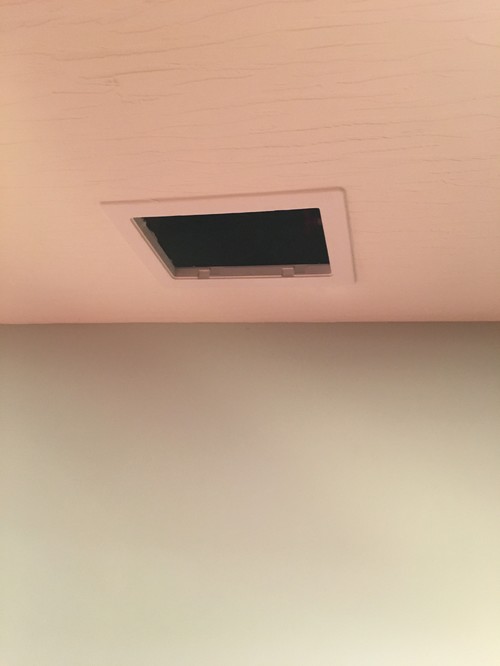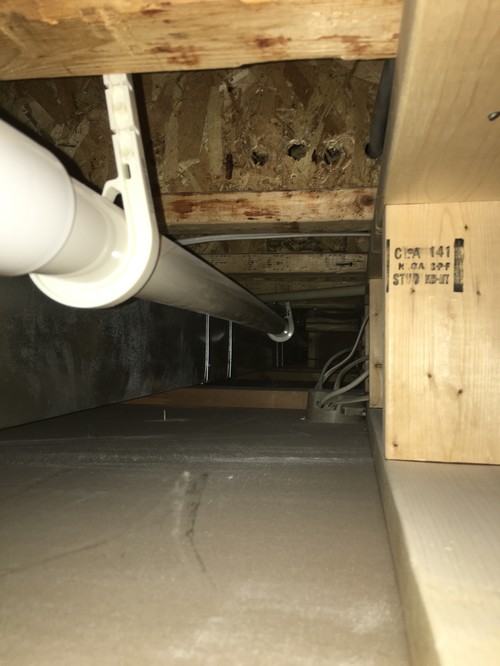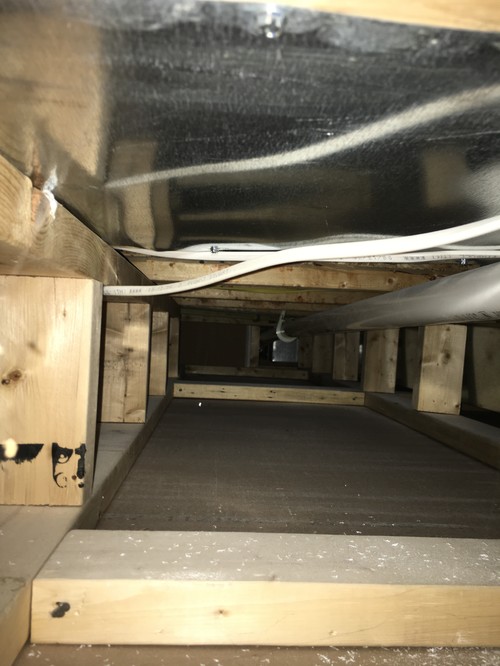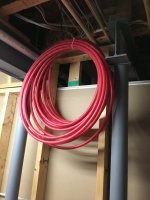Squeak
Member
I am in the process of looking at a tankless water heater with a built in recirc pump. I would love to have a dedicated return line for the recirculation, as the heater (Rinnai RUR98i) provides better control with that, versus a crossover.
The outlet furthest away from my heater would be the kitchen sink.
Bad news: My basement is finished with a drywall ceiling, and this line being run would include having to travel about 20 feet in this "finished space"
Good news: The way my basement was built, I have a straight shot in a "plenum" space between my unfinished mechanical room, and where the connection would need to be. Even better, I put in a access panel where the tie in to the kitchen would be, because the shutoff for the ice maker is there.
It would be very easy to run a piece of CPVC or PEX in the space, and be able to make a connection at the access panel.
However....short of having to create more access panels, I would not be able to strap it down for the length of the run, except at the beginning, and at the end. It would have to sit upon the framing members for the ceiling.
Pictures:
1) Access panel at the end of the run

2) Looking from my unfinished utility space down the "plenum" (Note the white PVC pipe hanging as a reference -- that is actually something I ran to fish wires into an interior finished room in the basement. It is not for plumbing at all)

3) Same "plenum" but now looking from the access panel back. Might be hard to tell, but about halfway though this run, the space narrows to only about 6" wide due to beams.

As you can see, getting a pipe through there would not be tough, but it would just be laying on the framing members for that run.
How big of a deal would it be to run this return line in this space without strapping it down? I know it is not ideal, but is it "sort of bad", or "really stupid because of X, Y and Z"?
Better to use PEX or CPVC for this run (current water is all CPVC)? I could also run 1.5" gray PVC as a "conduit" for it to get some rigidity, and run the 1/2" CPVC inside of that until meets the connection.
Thanks!
The outlet furthest away from my heater would be the kitchen sink.
Bad news: My basement is finished with a drywall ceiling, and this line being run would include having to travel about 20 feet in this "finished space"
Good news: The way my basement was built, I have a straight shot in a "plenum" space between my unfinished mechanical room, and where the connection would need to be. Even better, I put in a access panel where the tie in to the kitchen would be, because the shutoff for the ice maker is there.
It would be very easy to run a piece of CPVC or PEX in the space, and be able to make a connection at the access panel.
However....short of having to create more access panels, I would not be able to strap it down for the length of the run, except at the beginning, and at the end. It would have to sit upon the framing members for the ceiling.
Pictures:
1) Access panel at the end of the run

2) Looking from my unfinished utility space down the "plenum" (Note the white PVC pipe hanging as a reference -- that is actually something I ran to fish wires into an interior finished room in the basement. It is not for plumbing at all)

3) Same "plenum" but now looking from the access panel back. Might be hard to tell, but about halfway though this run, the space narrows to only about 6" wide due to beams.

As you can see, getting a pipe through there would not be tough, but it would just be laying on the framing members for that run.
How big of a deal would it be to run this return line in this space without strapping it down? I know it is not ideal, but is it "sort of bad", or "really stupid because of X, Y and Z"?
Better to use PEX or CPVC for this run (current water is all CPVC)? I could also run 1.5" gray PVC as a "conduit" for it to get some rigidity, and run the 1/2" CPVC inside of that until meets the connection.
Thanks!


